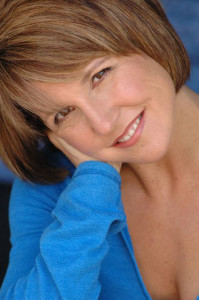
I am a Professor of Theater at Napa Valley College, where I serve as Artistic Director for Napa Valley Conservatory Theater, the resident theater company. In 2009, I brought up the topic of Peoples Temple in my Diversity in American Drama class. None of the students could reference it, except for one student who said, “Weren’t they the Kool-Aid people?”
It was then that I knew I had to program the play The People’s Temple as part of our 2010/11 season. Growing up in the 1970s, I recall Jonestown as a shocking tale, rivaling the terrorist attacks of 9/11 a generation later in its horror. It felt unfathomable to me that the events surrounding the story of Jonestown and the people of Peoples Temple could be reduced to the term “Kool-Aid.”
I passionately pitched the play to our Division Chair who believed in my vision and gave it the green light. I was ecstatic.
When I embarked on the project, however, I soon found myself questioning my own judgment in taking it on. The sheer volume of research made my head spin. I remember thinking to myself at the first rehearsal, “What have I gotten into?”
Our cast was an eclectic group of students as well as experienced and professional actors, representing various cultural, ethnic and gender groups. Older actors vividly recounted exactly where they were when they learned of the huge loss in Jonestown, while many younger twenty-something cast members struggled to comprehend the events that took place.
As they engaged in spirited dialogue about conspiracy theory, I felt my head spinning yet again. Then I looked down at my script and found an anchor in the swarm of ideas swirling around the room.
“Ladies and gentleman, I said, “look down at your text. This is the play we are doing. If you are interested in exploring conspiracy theories about the CIA, then you are in the wrong place. We are here to reveal the stories of human beings who were forever changed by Peoples Temple and the events of Jonestown. It is our job to tell the truth with the words we’ve been given.”
In the first weeks of rehearsals, the cast brought in photos and other contextual information about the people they were portraying. We created a space in the center of the room where we mounted all of the images, creating a makeshift memorial which served as a constant reminder that these were real people and that we were telling real stories. As the weeks went on, the memorial collage began to take a life of its own and became part of the scenic design.
At the same time, we began reaching out to the survivors. Stephan Jones, Tim Carter, and other former Temple members, spent hours on the phone and in person discussing their experiences with cast members. It seemed that each rehearsal would begin with an enthusiastic story of a conversation with someone connected to Jonestown. We all started to gain different perspectives of Peoples Temple, seeing the participants not as “cultists” but as ourselves.
It was then that joy entered our rehearsals. And the more we explored song and storytelling, the more we discovered that the play was more a celebration of life rather than death.
In Act I, the cast was committed to converting the audience to become Peoples Temple members. During one intermission, I overheard a group of students say, “Wow, everyone seems so happy and hopeful. If they had come to my neighborhood, I would have joined them.”
During another intermission, I checked in with an audience member who was quietly weeping to make sure she was all right. She turned to me and said, “My neighbors were members and they were just like that. So much love. So much hope. This brings them back to me.”
The second act of the play is a profound retelling of the events that lead up to 918 deaths. At the end of each performance, our set became a photo tribute of those who had passed. And every night, after the show, audience members would remain in the theater and then venture onto the stage to examine each photo with careful consideration.
Our production of The People’s Temple became a phenomenon on campus and throughout the Napa Valley. We sold out the entire run, and when we extended it, we sold out those performances too. Professors would report that their students were so moved by what they had experienced, that they wanted to learn more about the people and events surrounding Jonestown.
Friends and colleagues have commented that my work on The People’s Temple is my best to date. For me, it will forever be one of the most important explorations of our humanity I have ever experienced.
Thank you Leigh, Margo, Stephen, Greg, and those who shared such personal stories with all of us who collaborated so deeply to tell the truth.
(Jennifer King may be reached at jking@napavalley.edu.)